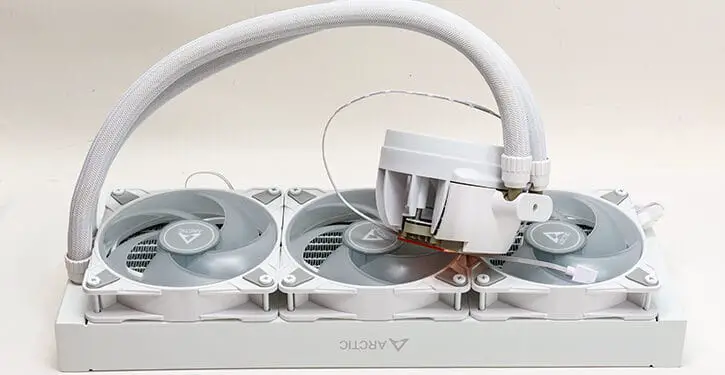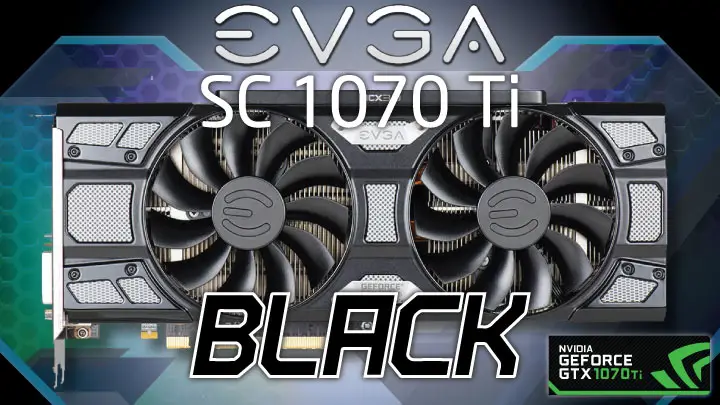In some ways we are disappointed with the shipping container Arctic opted for their excellent Arctic Liquid Freezer III 360 A-RGB White Edition (or “ALF 3 360” as we are going to call it for brevity’s sake). We say this as the 420 editions come in an attention getting, arguably ‘funky’… certainly “cool” box. One that draws in your eyes and then impresses with its attention to detail. Sadly, only the flagship 420-class models get that best in class box. The rest get a more standard looking all white shipping container. One that thanks to its aggressively conservative looks still grabs one’s attention… but could easily be mistaken for any of a number of other conservative leaning manufactures models.

Make no mistake. The ALF 3 360’s box is good. It is just is not as good, nor impressive, as the 420’s. To be blunt, the 420 has set the bar awfully high and a rectangular box – no matter how good and how detail orientated – can compete. On the positive side there are nice little touches that do elevate this shipping container above most of the competition. For example the top of the box gives a nice schematic of what is included. Sadly, Arctic does not include any dimensions to go along with it (and they really should) but it is still above average and a nice little touch.
The same is true of the fact that the bottom of the box is where you will find the label that clearly states what revision is housed inside. In this instance a Rev.2. Thus if you are not sure if you buying a Rev. 1, a Rev.2… a Rev.99999 all one needs do is flip over and look. No fuss. No muss. Just pure win.

Mix in excellent interior protection and we do like this shipping container. A lot. It just is not as funky-cool as the 420… and we would really love to see all ALF 3’s get the royal treatment. After all few will ever actually handle (let alone buy) the big boi edition 420.
Moving on.

For some the sheer mindboggling size of a 3x120mm AIO will be impressive. For others the 360-class will be considered barely meeting their “minimum standard”. At least that is how most 360-class AIOs are looked upon by the majority of buyers. Few, even those who prefer 3×140 over 3×120, will not be impressed with the ALF 3 360… as this a big, robust cooling solution that also happens to look like a million bucks. Yes. Somehow Arctic managed to once again get that delicate balancing act of form and function correct. So correct that few will be anything other than impressed with what they have unleashed upon the market.

Of the two we consider the utility (aka function) of a device more important than its aesthetics (aka ‘form’). As such the ‘thick’ 38mm style radiator Arctic uses in the ALF 3 series is in and of itself a work of art. As we went over in the ALF 3 420, this next generation radiator is unlike any other AIO on the market… as it is pretty much a ‘double thick’ (~45mm) radiator hiding in a 38mm z-height form-factor radiator. If that sounds confusing, and to be more precise, this 38mm thick radiator has the cooling performance (or at least potential) of that of a 45mm thick radiator. Just without the extreme PITA factor that goes along with working with ultra-beefy radiators.

So how did Arctic do what no one else has done before… or even thought about doing? Simple. They cheated. Hyperbole and jokes aside (as Arctic are known in certain circles for making excellent 27mm thick fans that compete against 25mm thick ones), Arctic took a look at what makes a radiator actually work, then they asked a simple question “why?”. Then they threw out all their preconceived notions and proved to their own satisfaction what is and what is not still correct. That seemingly simple idea took a lot of time, effort and money but Arctic’s management were willing to do it… to the glee of their engineering team who got paid to think outside the box.
However, to ‘get’ what they did a bit of background information is first required. With water cooling radiators the whole idea is to move water over a waterblock’s cold plate, efficiently transfer said heat to the water, then push this heated water through long, but narrow, water channels that in turn transfer the heat to the folded aluminum fin array hugging said channels… that then in turn transfer the heat to the air via fan’s air movement. Sounds complex… because it is. Back in the early days of water cooling it was quickly found that the area directly in front of the fan’s hub was a dead zone. AKA an area of the radiator where no air movement was possible. No air movement means no heat transference. No heat transfer means wasted potential and more surface area required to overcome these dead zones. To overcome this known issue “standoffs” were built into the radiator. As the name suggests these standoffs keep the fan from being mounted directly to the core… and instead the fan ‘stands off’ from the core allowing air movement to actually cover the dead zone directly in front of a fan’s motor hub before being pushed through the folded aluminum cooling fins.

As an added benefit by moving the fans off the rad less static pressure is required to push the air through the fin array. Making it a win-win inclusion that quickly became the de-facto standard. Like everything else, in now ‘classical’ radiators, this standoff was standardized at between 5 and 6mm per side in the ‘standard’ (remember fans on the other side of the rad would suffer a similar fate as physics doesn’t care about push vs. pull). Thus a ‘thin’ 28mm rad has a cooling core of about 16 to 18mm thick, and a ‘thick’ has about 26 to 28 core… and a ‘double thick’ (~45mm) has about 33 to 35mm core.
This is where Arctic’s “heretical” approach to design enters the chat. Arctic’s engineers asked a simple question: why is the standoff standard set to a nominal 5.5mm? It was set to that because earlier fans were terrible. “Everyone knew” that 80mm was the pinnacle of radiator cooling performance, the 92mm form-factor was pushing things… and 120mm fans? That was a compromise size to say the least (and 140mm fans… on a radiator? Fuhgeddaboudit!). Thus, 120s needed all the help they could get when it came to reducing static pressure of a radiator. Which in turn meant a big arsed offset for the integrated ‘fan shroud’ / standoff. Ironically, Artic have been making insanely good, and yet not insanely priced, 120mm fans for years now. 120mm fans don’t need no “handicapable” (+/-0.5) 5.5mm offset. Instead, it gets the same nominal 3mm that the 140 ALF 3’s get.

This “one weird trick” (that other companies engineers do hate the ALF team for) meant that the ALF 3’s 38mm thickness allows for a ~32mm z-height/thick cooling core. Put another way it’s a rounding error away from entry level ‘double thick’ radiators. Which in turn means the ALF 3 360 should have similar to same cooling performance as a double thick ‘custom water cooling loop only’ 3x120mm radiator… just without the headaches those beefy double thick rads bring to the table when it comes time to mount them in cases meant for mere mortals.
The downside to this… beef-a-roided radiator is obvious. With its 13FPI it has been highly optimized for the Arctic P12 fan. So you can not just swap out these beautiful fans for just any 120mm fan you want. Yes… your probably can get away with many other 120mm options as 120s have gotten better over the years. Just do not expect those fans to work as well as the P12s. Instead, unless you are willing to either spend Noctua “IndustrialPPC” fan prices or go the 120x38mm thick (or at least 30mm) fan route… you are not going to want to swap out the ALF 3 360’s stock fans.

Which is perfectly fine. The included 2K fans are rather good and rather pretty. Yes, they do not move as much air as some 120mm fans… but they don’t have to. They are the epitome of the “horsepower vs torque” debate, so while we would not use them as ‘case fans’ these eerily good fans push/pull air through a radiator like nobodies’ business. In fact, you can easily run them all the way down at 50% and they still can push enough air though that beefy rad to keep temperatures this side of sane. Color us impressed.
Moving on. The other downside to having the equivalent of a ‘double thick’ radiator in an All In One cooling solution is the fact that most AIO’s pumps are straight trash. If one is an overly optimistic mood, one could argue they are ‘optimized’ for noise and not performance. If one is more pessimistic… they are optimized to be as cheap as possible and last jussst past their warranty period. Considering Asetek is notorious for their anti-consumer practices – right down to suing CoolIT and everyone else over sticking a fricking pump on the top of a ‘block… we fall more into the latter rather than former category.

Thankfully, Arctic never has and probably never will use Asetek as the builder of the ALF series. Instead Arctic has created a custom pump+block+reservoir that makes Asetek’s design seem cheap and outdated by comparison.












